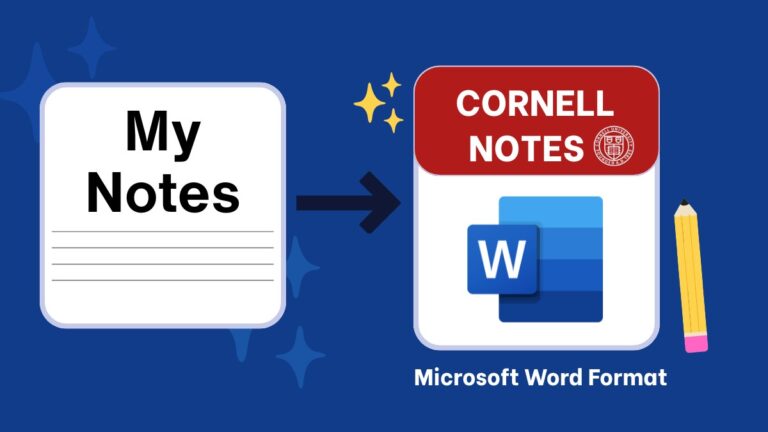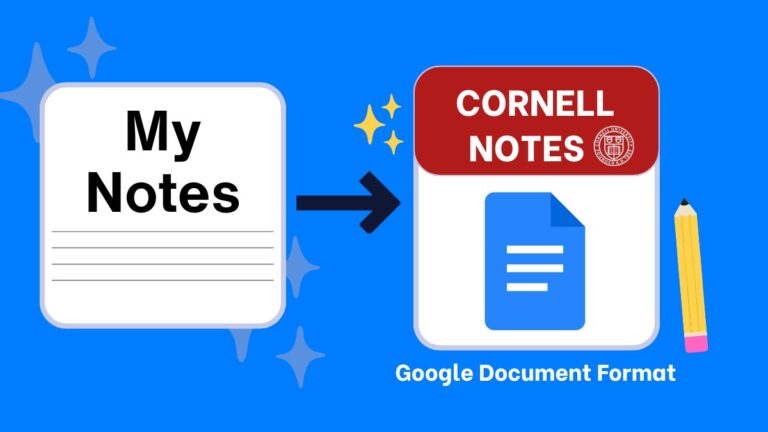Use Kahoot with ChatGPT to help you turn any class material into game-ready questions that boost recall, motivation, and engagement. Benefits include faster quiz creation, difficulty control, and data-friendly exports for review. Research shows retrieval practice and Kahoot-style quizzing raise achievement and retention in real classrooms. Wiley, 2024; Agarwal et al., 2021.
What Are Class-to-Kahoot Student Prompts?
These prompts convert lectures, notes, slides, and readings into Kahoot question banks with clear answers and rationales. They’re built for high school and college students, teachers, and tutors who want rapid quiz generation with smart scaffolding.
They differ from generic quiz prompts by focusing on pacing, distractor quality, and analytics that suit Kahoot. See related guides like CSV-ready flashcards and spaced-repetition decks.
How to Use These AI Class-to-Kahoot Prompts
Pick 3–5 prompts, paste your source (audio, captions, slides, PDF, or notes), then run the steps in ChatGPT or Gemini. Export the output to Google Docs or CSV when done. New to AI note-taking? Read the Get Started with AI Note Taking to easily get started.
Multiple-Choice Builders (1–20)
Create four-option items with strong distractors, precise stems, and automatic answer keys.
- From these notes, generate 10 four-option MCQs with one unambiguous best answer.
- Write MCQs using clear question stems, no negatives, and plausible distractors from misconceptions.
- Convert each key learning objective into one medium-difficulty MCQ with rationale for answers.
- Create MCQs that test application, not recall, using short scenarios or data snippets.
- Generate MCQs balancing Bloom’s levels: 40% understand, 40% apply, 20% analyze/evaluate.
- Rewrite weak distractors into common error patterns students make on this topic.
- Ensure options are similar in length and grammar to avoid clueing the correct answer.
- Produce MCQs that isolate exactly one concept per item for targeted retrieval strength.
- Generate parallel MCQs per subtopic, each with matching difficulty and format consistency.
- Create MCQs that require interpreting a small table or chart embedded in the stem text.
- Draft MCQs with “all of the above” avoided; keep exactly one correct option per item.
- Turn end-of-chapter problems into MCQs that test reasoning steps rather than final answers.
- Make MCQs that compare look-alike terms, requiring selection of the most accurate definition.
- Author MCQs where distractors each map to a specific misconception listed after the key.
- Produce MCQs with short stems and self-contained context to fit Kahoot screen constraints.
- Convert learning outcomes into MCQs with “why” rationales for the correct option only.
- Write MCQs using everyday contexts so novices apply concepts outside textbook wording.
- Create MCQs with numerical answers requiring estimation, not lengthy calculation or units.
- Generate MCQs where each distractor is true but irrelevant, testing concept discrimination.
- Produce MCQs with parallel wording across options and randomized correct option positions.
True/False and Two-Option Checks (21–40)
Use quick binary questions to spike retrieval, diagnose misconceptions, and speed warm-ups.
- Generate 10 true/false items that target the trickiest misconceptions in these notes.
- Create two-option questions where one answer is correct for the stated conditions only.
- Write binary items that flip truth when a specific boundary value changes by one unit.
- Produce true/false statements paired with one-sentence explanations for immediate feedback.
- Draft true/false items that require spotting scope, assumptions, or hidden qualifiers.
- Create binary items contrasting commonly confused terms with minimally different definitions.
- Write two-option questions that force evaluation of units, scales, or sign conventions.
- Generate true/false items where “false” requires identifying the exact violating condition.
- Produce binary questions that test “always,” “sometimes,” or “never” rule awareness explicitly.
- Create binary questions using short real-world scenarios to check transfer beyond definitions.
- Draft true/false items limited to 120 characters for fast Kahoot pacing on phones.
- Create two-option questions emphasizing cause versus correlation distinctions in datasets.
- Generate binary questions that flip correctness when context shifts from micro to macro scale.
- Write true/false items tied to standard formulas, focusing on constraints and edge cases.
- Produce binary items where the explanation names the exact rule or theorem invoked.
- Create two-option questions that demand unit conversions before deciding true or false.
- Generate binary checks on boundary definitions like inclusive versus exclusive intervals.
- Write true/false items that require reading an axis label or legend to avoid traps.
- Produce two-option questions where conditions change mid-scenario to test updating accuracy.
- Create binary items that ask which of two explanations better accounts for the outcome.
Short Answer and Fill-in-the-Blank (41–60)
Build concise prompts for definitions, calculations, and key steps that resist guesswork.
- Generate short-answer questions limited to 15 words, each with a one-line model response.
- Create fill-in-the-blank questions targeting formula components or terminology precision only.
- Write short answers requiring a numeric result with specified rounding and unit format.
- Produce cloze items blanking the single most diagnostic term in each definition sentence.
- Create short answers that require naming the step most likely to fail in the procedure.
- Generate short answers from this diagram’s labels, one question per labeled element.
- Write short answers that demand citing the exact law, property, or evidence used.
- Create cloze items where wrong entries reveal specific misconceptions listed in feedback.
- Produce short answers prompting a two-step justification after the primary response entry.
- Create short answers that require interpreting a tiny graph or trend before responding.
- Generate cloze questions that replace numbers with blanks in multi-step calculations only.
- Write short answers emphasizing boundary conditions, exceptions, or limiting behaviors.
- Create cloze items where students supply the missing variable name or symbol precisely.
- Produce short answers that require stating a decision rule rather than computing outcomes.
- Generate cloze items blanking qualifiers like “only if,” “unless,” or “provided that.”
- Write short answers that demand naming the most diagnostic test for a given symptom set.
- Create cloze questions that hide a connector word critical to logical validity of arguments.
- Generate short answers that require choosing the better of two competing hypotheses.
- Write short answers where evidence lines are rated as strong, moderate, or weak explicitly.
- Produce cloze questions mapping each blank to a specific step in a standard procedure.
Image, Diagram, and Media-Based Kahoots (61–80)
Leverage visuals and clips to assess interpretation, labeling, and quick evidence evaluation.
- Create MCQs where the image is the stem; ask for the most diagnostic feature shown.
- Generate labeling questions using this diagram; include one distractor per adjacent structure.
- Write items asking students to match a graph to the correct model or equation family.
- Produce questions requiring identification of an outlier or anomaly directly on the chart.
- Create image-based items that check scale reading accuracy and significant figures discipline.
- Generate questions where students pick the best caption that describes the visual evidence.
- Write items pairing a short clip or waveform with the phenomenon it most likely indicates.
- Produce visual questions that require choosing the correct axis transformation to linearize data.
- Create image questions where two nearly correct answers differ by a key constraint only.
- Generate diagram-based questions that ask for the missing intermediate state or label.
- Write items where students pick which photo best exemplifies the target concept boundaries.
- Create image-anchored questions that ask for the most likely cause among look-alike patterns.
- Produce questions matching microscopic and macroscopic views of the same phenomenon.
- Generate items selecting the correct instrument reading from similar-looking display panels.
- Create questions where students identify violated assumptions visible in the plotted data.
- Write items requiring selection of the best control image for the hypothesis presented.
- Generate questions where students choose the correct label order along a pathway diagram.
- Produce image items that require reading a small caption before selecting the best inference.
- Create questions matching cause-effect pairs to annotated regions in the provided image.
- Generate items selecting which manipulated visual best tests the stated hypothesis efficiently.
Difficulty Tuning, Pacing, and Analytics (81–100)
Control time limits, sequencing, and data outputs to inform reteaching and spaced review.
- Tag each question easy, medium, or hard, and recommend per-tag time limits in seconds.
- Sequence questions from easiest to hardest based on prerequisite knowledge dependencies only.
- Suggest two alternative time limits per item for fast and slow class pacing modes.
- Output a CSV with question, options, correct key, difficulty, and recommended timer setting.
- Rewrite any overlong item to 120 characters or fewer without losing conceptual precision.
- Balance the set so each learning objective appears in at least two distinct items.
- Flag potentially ambiguous items and propose precise rewrites with clarified conditions.
- Create a pacing plan for 15-question Kahoot sessions including buffer and discussion minutes.
- Recommend post-game exit tickets aligned to the weakest objectives shown by accuracy data.
- Propose reteach micro-lessons that address the three most-missed items from gameplay data.
- Map each question to syllabus standards or objectives for audit-ready documentation exports.
- Suggest spaced review dates for each objective using 1-3-7-14-30 day intervals.
- Draft remediation items for any question with predicted accuracy below 45 percent correct.
- Create extension items for high performers targeting analysis or evaluation level tasks.
- Produce a teacher view summarizing accuracy, fastest item, slowest item, and distractor picks.
- Recommend which items to convert to true/false for a rapid warm-up Kahoot variant.
- Optimize questions for small screens by shortening stems while preserving core discriminators.
- Group items into themed rounds and provide quick teacher scripts for transitions between rounds.
- Output a one-page summary for students listing must-know facts missed during the game.
- Provide a clean CSV import with columns for question, options A–D, correct key, and timer.
Printable & Offline Options
Export your final set to Google Docs or CSV, then print for paper warm-ups or stations. Pair with our student prompt hubs for non-device days. Browse more categories at Students’ Prompts Hub.
Related Categories
- Spaced-Repetition Deck Prompts
- CSV-Ready Flashcard Prompts
- Study Guide Prompts
- Explain-Concepts Prompts
- AI Study Guide Generator
FAQ
How do I turn a lecture into a Kahoot in under 10 minutes?
Paste your notes or slides into 3–5 prompts from the MCQ section. Ask for a 10–15 question set with keys and rationales. Use the CSV prompts (#84, #100) for import columns. Set timers based on difficulty tags (#81). Run a quick playtest, then trim any items that exceed 120 characters (#85).
What makes a good Kahoot question?
Clear stem, one concept per item, plausible distractors tied to real misconceptions, and concise wording for small screens. Avoid negatives and “all of the above.” Align items to objectives and vary Bloom’s level. Use rationales sparingly to speed review.
Can these prompts support spaced review?
Yes. Use #92 to schedule 1–3–7–14–30 day reviews and feed missed objectives into new games. Combine with spaced decks in our Spaced-Repetition Decks.
Do retrieval practice and Kahoot actually improve learning?
Multiple reviews and meta-analyses report improvements in achievement, retention, and motivation when quizzing is used well. See recent syntheses for retrieval practice and Kahoot’s classroom effects cited below.
Any tips for accessibility and device constraints?
Keep stems under 120 characters. Use high-contrast images. Avoid color-only cues. Read options aloud when needed. Provide printables. Ensure each item is answerable without the image when bandwidth is limited.
Final Thoughts
Kahoot built from your class notes can accelerate recall and reveal gaps fast. Use the MCQ, binary, and short-answer prompts to generate tight items with solid distractors and clean CSV imports. Want more? Start AI note-taking instantly for free with our AI note taker.



